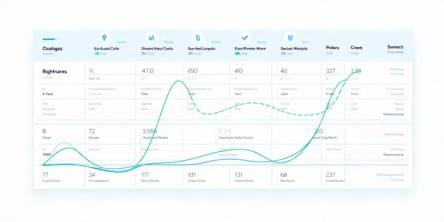11 Essential Testing Strategies That Improve Mobile Testing

Mobile technology is changing rapidly, and the quality and performance of mobile applications are of paramount importance. Testing the mobile applications to ensure that they perform as per the design is equally important. This testing can be achieved by using some strategies that can play a critical role in improving the testing of mobile applications. The mobile testing strategies offer a methodical way to identify potential defects in the application and resolve the issues to ensure that the applications function smoothly on all operating systems and devices.
In this article, I will discuss the strategies that can help improve the testing of mobile applications.
Strategies For Testing Mobile Applications
• Involving QA in early stages of development: By involving quality assurance (QA), the testing process of mobile applications can be improved. The strategy can be used to identify and address application defects at the early stage of development. It lets developers design effective test cases by giving them a better understanding of the application's requirements and functionality. Using QA to improve testing can also increase the collaboration between the developers and the testing team, which helps detect problems at early stages. This can also reduce development and testing costs and let companies release a reliable mobile application.
• Understanding user requirements: For any mobile application to be designed and developed, it is essential for developers to understand the user requirements or expectations. Understanding user requirements is a strategy that can be used to improve the testing of mobile applications. The process involves trying to understand what kind of functionality, performance, use, and experience the end user wants from a mobile application. When the testing process confirms these expectations, the testing team can ensure that the application meets the technical requirements and user needs and preferences. The strategy also can be used to understand from the user's perspective about improving the application further, which helps increase the quality of the application. Understanding user expectations leads to a user-centric application that can increase user satisfaction and prove to be successful in the market.
• Cross-platform testing: The cross-platform testing strategy can be used to deliver a stable and consistent experience across software platforms like Android, iOS, and Windows. With different operating platforms, multiple versions and devices, the performance of an application can varies in a significant way from one software platform to another. The purpose of cross testing is to ensure that all discrepancies are identified and addressed to ensure that the application works and gives the same seamless experience across all devices and operating systems. This strategy helps improve the quality and reliability of the application and ensures an increase in the user base. The process of cross-platform testing results in a more robust and acceptable application.
• Feature functionality: The feature functionality strategy is used to thoroughly examine how each feature functions with respect to its intended or designed and actual performance. By testing the functionality of each feature, it becomes possible to know whether the application functions as intended under various conditions. This method of testing helps identify discrepancies between the expected and real outcome, allowing for prompt correction if issues are found. The strategy also enables thorough testing on inter-features and its interactions that check the overall application usability.
• Usability testing: The usability testing strategy involves testing a mobile application by users. User interaction lets developers identify issues to make improvements as per user feedback. This testing strategy can help uncover a range of issues that range from difficulty in navigation and design flaws to puzzling interfaces and even functionality problems. The usability testing lets the testers and developers focus on the user perspective, helping them upgrade the application to be more functional, intuitive, and user-friendly. This process can help bring out a higher quality product that leads to better user satisfaction. It lets developers resolve any potential issues so that the finished product is up to the mark.
• Cloud-based testing: Cloud-based testing strategy is used to provide a cost-effective, flexible, and scalable solution for a wide range of devices and operating systems. Cloud-based testing can be used to mimic actual user interactions to ensure that the application works as intended under different scenarios. Cloud-based testing helps remove the need for physical devices, reducing infrastructure costs. It also enables parallel testing that can significantly reduce the time taken for testing. It also enables and increases collaboration between various teams since the cloud-based testing environment allows the test cases and results to be accessed from anywhere.
• Security testing: A security testing strategy is used to find and resolve all potential issues that hackers can use. This process is important to ensure the confidentiality and integrity of data in mobile applications. By imitating real-world security attacks, this testing strategy can be used to find weaknesses in the application security like authentication, authorization, protection of data, and management of sessions. The strategy also helps ensure that the application is compliant with the regulations and reduces risks related to data breaches. Security testing strategies can improve the overall quality of the application.
• Performance testing: The performance strategy tests the speed, responsiveness, and stability of mobile applications. The testing allows testers and developers to identify the bottlenecks, slow response times and system issues that can affect user experience negatively. The testing is done by using various scenarios, performance, and load conditions to check and ensure that the application can handle peak usage. This testing strategy can be used to increase application reliability, speed, and overall performance.
• Localization testing: Localization testing is done to ensure that the mobile application can be adjusted to the language and other requirements of the target market. The testing includes checking the local language version, which includes translation, date, and time format. It is also tested for currency and overall usability. This testing strategy is to ensure that the user experience is seamless, to make the application globally acceptable.
• Continuous integration and testing: The strategy of continuous integration (CI) and testing gains importance because of the various device types and operating systems that developers must work on. Automated testing is used for a wide range of edge cases and can also be run on different devices and configurations. The process ensures that the application works in different environments under different user interactions.
• Beta testing: The beta testing strategy is used to obtain user feedback by releasing the mobile application to a limited or beta group of users. The application is tested under real-world conditions and feedback is provided about errors, bugs, crashes, and other issues related to usability. The feedback is then used to make modifications and improvements to the application. Beta testing also helps in checking for compatibility of the application with different devices and operating systems.
Final Words
These unique strategies increase the quality of mobile applications and provide a seamless user experience. A mobile app quality testing company can help businesses develop mobile applications that meet the specific needs of the market and target audience. Implementing these strategies can result in better testing processes and a higher quality of mobile applications.
Similar Articles
Modern businesses are drowning in communication overload, and much of that burden stems from outdated tools that simply can’t keep up
Building lending software isn’t just a technical project—it’s a business decision. Whether you're a fintech founder or part of a traditional lending institution trying to go digital, three questions will shape everything that follows
Learn why robust security is crucial for super app development. Explore key strategies and best practices for mobile app development security.
Walkie-talkies with an extensive reception capacity have changed significantly when it comes to portable communication by displaying cutting-edge features with seamless connectivity that covers more than just the state
USB-C technology has revolutionized the way we charge our devices, offering faster charging speeds, higher power delivery, and universal compatibility across multiple devices
Discover expert mobile app development strategies to create a viral app that attracts users and boosts engagement
Optimize app localization for iOS users across the EU with language, cultural, and regulatory adaptations. Engage users and boost retention with these tips!
Discover the top 10 mobile app development trends of 2024! Explore 5G, AI, AR/VR, blockchain, and more to stay ahead in the ever-evolving app development landscape.
With its triple-lens design and fantastic photo and video quality, the iPhone 11 Pro Max is extensively acknowledged for its superior camera system. But problems can occur with also one of the most advanced technologies. If you're having issues with the iPhone 11 pro max camera lens, knowing the typical problems and how to repair them









